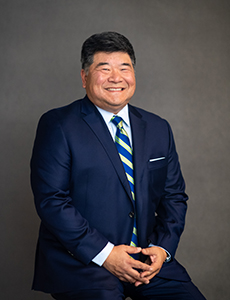Shrinking Limits and Expanded Premiums in Professional Lines Insurance? Hold On, Things Aren’t as Bad as You Think

Agents faced a difficult management and professional liability (MPL) market even before the arrival of COVID-19, which exacerbated already shrinking limits and rising premiums.
In its “2021 U.S. Property Market Outlook” report, Risk Placement Services (RPS) sees some areas improving, or at least not worsening, as long as the pandemic continues to recede and the economy recover.
The distributor of specialty insurance products is blunt about the impact of COVID-19, noting the elevated number of corporate bankruptcies and class action lawsuits, including allegations that companies misrepresented their products’ safety and inadequately disclosed the pandemic’s impact on their businesses.
In addition, a wave of employment practice liability (EPL) claims related to pandemic furloughs and management’s back-to-the-office decisions are expected.
“As a result, EPL carriers have been pushing for higher rates and retentions with some adding COVID-19/pandemic-related exclusions,” the report said.
Remote Work Increases Cyber Risk
The pandemic also enabled cyber criminals to exploit network vulnerabilities when employees work remotely, resulting in a first-time hardening of that market, “with carriers laser-focused on managing ransomware and social engineering exposures,” according RPS.
Manny Cho, executive vice president at RPS, noted the uniqueness of today’s market, driven by pandemic-related factors and also market factors that had resulted in MPL markets hardening.
“Often we’ll see a line or category of business that might be firmer than others at any given time, but this is the first time I can recall when just about every line of business we touch is firming in the marketplace in terms of rate increases, changes in retention, capacity changes, and changes to terms and conditions,” Cho said.
“It really has hit across the board.”
Insured clients are thus getting hit from every angle, Cho said, adding that agents need to set the proper expectations for customers, and teams must work to figure out how to move accounts from the middle or bottom of carriers’ submissions stack to the top.
“Because if carriers have limited capacity to deploy, you want to make sure they look at your customer, your insured, as an account where they want to make their bet for the year,” Cho said.
That means discussing with clients the best information to provide to carriers, such as financials that include their growth and reopening plans following COVID-related shutdowns and how their risk will be different in 2021. Elements, Cho said, where clients may not have spent much time, or previously received follow up questions from carriers.
Increasing Your Cyber Defenses
In terms of cyber security, the increase in ransomware events highlights the risk of cyber attacks that’s been elevated by employees working from home.
Cho said many carriers are using third parties or proprietary technology to do scans of insured clients’ cyber defenses and discovered, for example, that open remote desktop protocol (RDP) ports are an entryway into systems for such attacks.
“Carriers want to know what resources organizations have to manage that,” Cho said, adding that RPS is reviewing applications, noting discrepancies and then going back to get more clarification, so clients hit all the carriers’ checkmarks. “It’s really making sure they’re seen in the best light, so they can get the best terms.”
Cho said that last year when RPS clients shut down due to the pandemic, carriers wanted to know their plans, including how they were going about shutting down, and whether employees were being furloughed or laid off permanently. Then similar inquiries were made when the companies reopened last summer, and again when they closed in the fall.
“Now that organizations are slowly reopening again, carriers want to know what steps they’re taking, their hiring practices, and so on,” Cho said.
Markets Are Stabilizing
The outlook for specific policy lines varies, but most appear to be stabilizing — or at least hardening at a slower pace.
Directors and officers (D&O) liability insurance, for example, is “stabilizing” for mature companies, according to the RPS 2021 Management & Professional Liability Market Outlook.
This means rates are increasing less although it remains a harder market, Cho said, adding new capacity is entering the market but competitors are currently not seeking to undercut one another.
The D&O market for companies going public remains challenging, especially for special purpose acquisition companies (SPACs), which offer a route to the public market through already listed shell companies. Cho said the big question is what long-term litigation may arise from SPACs, given their newness and regulators increasing scrutiny.
“For private companies considering SPACs, their renewals are increasing significantly,” Cho said.
RPS reports that the D&O and employment practice liability (EPL) market for nonprofits is relatively stable, with flat to 10% premium increases, although California and healthcare-related entities are seeing significant increases. However, the report adds, underwriters are closely eying nonprofit accounts regardless of geography and declining to renew those that have had claims or fall within a difficult class of business.
Similar dynamics are at work in the legal professional liability market, where carriers are cutting back on capacity, especially for small firms with 10 or fewer attorneys — the majority of law firms in the U.S.
“And though a firm might have been able to easily acquire $5 million in professional liability coverage in the past, carriers are now offering only $3 million in limits, or maybe $2 million on an account that previously bought $3 million,” RPS said.
“Firms that need larger limits will require multiple carriers to get there.” &










